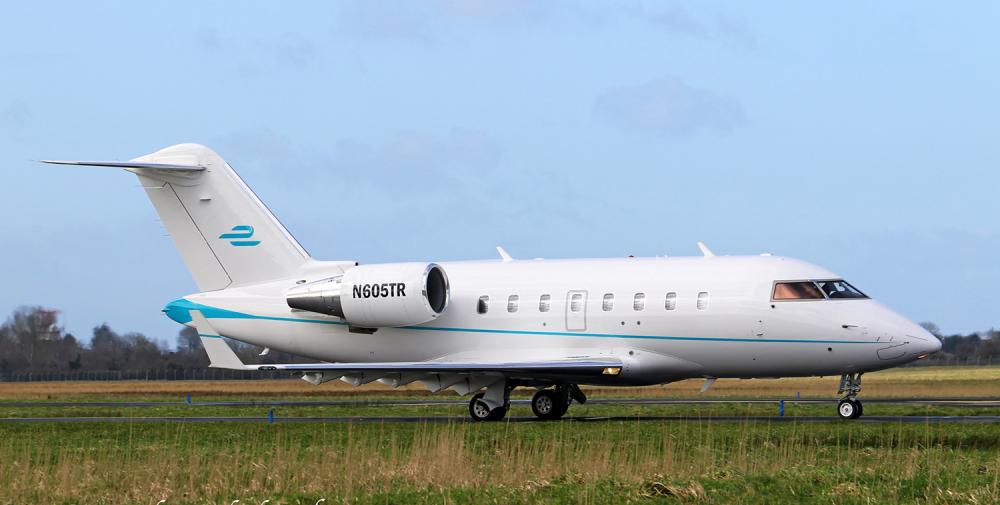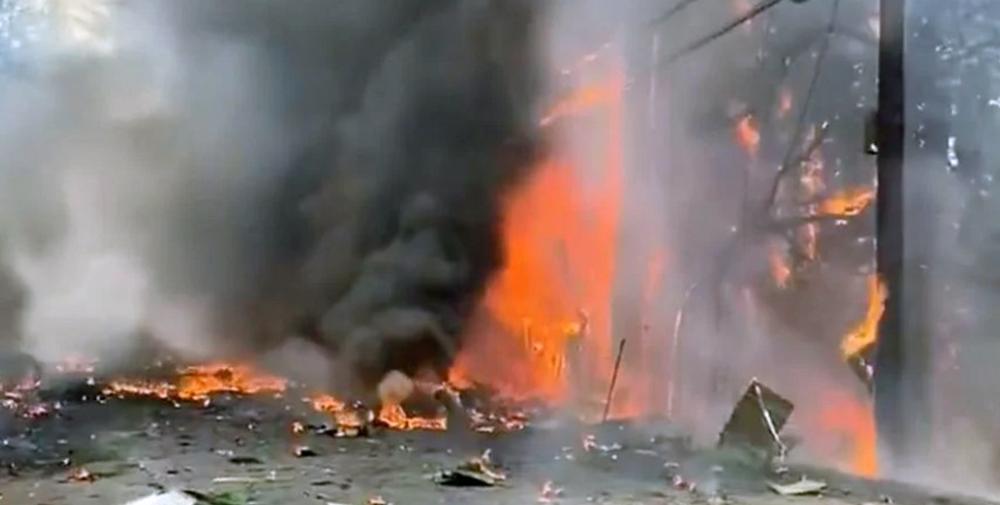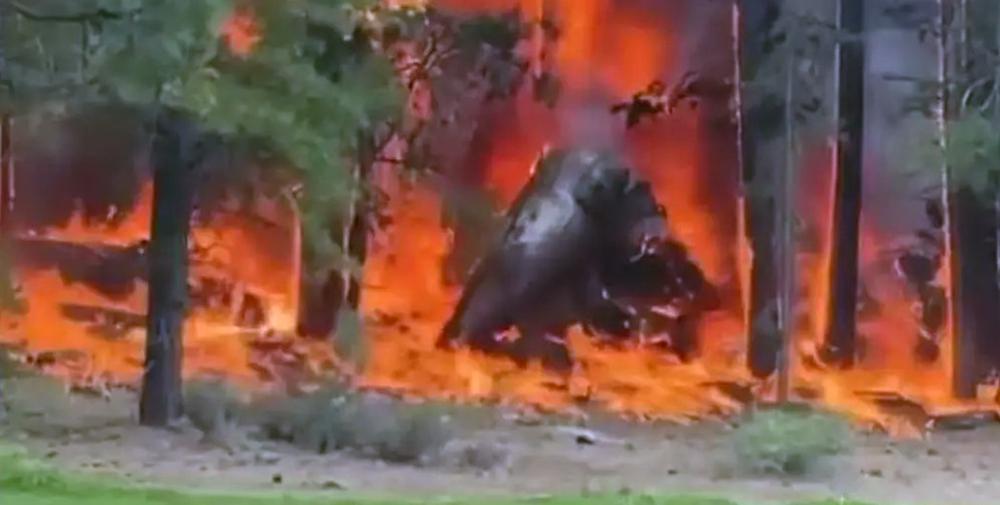Date & Time:
Jul 26, 2021 at 1318 LT
Type of aircraft:
Canadair CL-605 Challenger
Operator:
Tarco Aircraft Funding
Registration:
N605TR
Flight Phase:
Landing (descent or approach)
Flight Type:
Private
Survivors:
No
Schedule:
Coeur d'Alene - Truckee
MSN:
5715
YOM:
2008
Country:
United States of America
Region:
North America
Crew on board:
2
Crew fatalities:
2
Pax on board:
4
Pax fatalities:
4
Other fatalities:
0
Total fatalities:
6
Captain / Total hours on type:
235
Copilot / Total hours on type:
4410
Aircraft flight hours:
5220
Circumstances:
The captain and first officer (FO) departed on a non-revenue flight operating under instrument flight rules with four passengers bound for Truckee, California. Most of the flight was uneventful. During the descent, air traffic control (ATC) told the flight crew to expect the area navigation (RNAV [GPS]) approach for runway 20. The captain (pilot flying [PF]) stated and the FO (pilot monitoring [PM]) calculated and confirmed that runway 20 was too short for the landing distance required by the airplane at its expected landing weight. Instead of making a request to ATC for the straight-in approach to runway 11 (the longer runway), the captain told the FO they could take the runway 20 approach and circle to land on runway 11, and the FO relayed this information to ATC. ATC approved, and the flight crew accepted the circle-to-land approach. Although the descent checklist required that the flight crew brief the new circle-to-land approach, and the flight crew’s acceptance of the new approach invalidated the previous straight-in approach brief, they failed to brief the new approach. ATC instructed the flight crew to hold, but the captain was slow in complying with this instruction, so the FO started the turn to enter the holding pattern and then informed ATC once they were established in the hold. About 20 seconds later, ATC cleared them for the approach. Before the FO confirmed the clearance, he asked the captain if he was ready for the approach, and the captain stated that he was. The FO subsequently commented that they had too much airspeed at the beginning of the approach and then suggested a 360° turn to the captain, but the captain never acknowledged the excessive airspeed and refused the 360° turn. After the FO visually identified the airport, he told the captain to make a 90° right turn to put the airplane on an approximate heading of 290°, which was parallel to runway 11 and consistent with the manufacturer’s operating manual procedures for the downwind leg of the circling approach. However, the FO instructed the captain to roll out of the turn prematurely, and the captain stopped the turn on a heading of about 233° magnetic, which placed the airplane at an angle 57° left of the downwind course parallel with runway 11. As a result of the early roll-out, the flight crew established a course that required an unnecessarily tight turning radius. When they started the turn to final, the airplane was still about 1.3 nautical miles (nm) from the maximum circling radius that was established for the airplane’s approach category. The FO also deployed flaps 45° after confirming with the captain (the manufacturer’s operating manual procedures for the downwind leg called for a flaps setting of 30°, but the manufacturer stated that a flight crew is not prohibited from a flaps 45° configuration if the approach remains within the limitations of the airplane’s flight manual). The airplane’s airspeed was 44 kts above the landing reference speed (Vref) of 118 kts that the flight crew had calculated earlier in the flight; the FO told the captain, “I’m gonna get your speed under control for you.” The FO likely reduced the throttles after he made this statement, as the engine fan speeds (N1) began to decrease from about 88% to about 28%, and the airplane began to slow from 162 kts. After the FO repeatedly attempted to point out the airport to the captain, the captain identified the runway; the captain's difficulty in finding the runway might have been the result of reduced visibility in the area due to smoke. The FO continuously reassured and instructed the captain throughout the circle-to-land portion of the approach. On the base leg to the runway and about 25 seconds before impact with the ground, the FO started to repeatedly ask for control of the airplane, but neither flight crewmember verbalized a positive transfer of control as required by the operator’s general operating manual (GOM); we could not determine who had control of the airplane following these requests. As the airplane crossed the runway extended centerline while maneuvering toward the runway, the FO noted that the airplane was too high. One of the pilots (recorded flight data did not indicate which) fully deployed the flight spoilers, likely to increase the airplane's sink rate. (The flight spoilers are deployed using a single control lever accessible to both pilots.) The airspeed at the time was 135 kts, 17 kts above the Vref based on the erroneous basic operating weight (BOW) programmed into the airplane’s flight management system (FMS). About 7 seconds later, the left bank became steeper, and the stall protection system (SPS) stick shaker and stick pusher engaged. The captain asked the FO, “What are you doing,” and the FO again asked the captain multiple times to “let [him] have the airplane.” The stick shaker and stick pusher then briefly disengaged before engaging again. The airplane then entered a rapid left roll, consistent with a left-wing stall, and impacted terrain. A postcrash fire consumed most of the wreckage. All six occupants, four passengers and two pilots, were killed.
Probable cause:
The first officer’s (FO’s) improper decision to attempt to salvage an unstabilized approach by executing a steep left turn to realign the airplane with the runway centerline, and the captain’s failure to intervene after recognizing the FO’s erroneous action, while both ignored stall protection system warnings, which resulted in a left-wing stall and an impact with terrain.
Contributing to the accident was
- The FO's improper deployment of the flight spoilers, which decreased the airplane's stall margin;
- The captain’s improper setup of the circling approach;
- The flight crew’s self-induced pressure to perform and
- Poor crew resource management which degraded their decision-making.
Contributing to the accident was
- The FO's improper deployment of the flight spoilers, which decreased the airplane's stall margin;
- The captain’s improper setup of the circling approach;
- The flight crew’s self-induced pressure to perform and
- Poor crew resource management which degraded their decision-making.
Final Report:
N605TR.pdf4.02 MB





